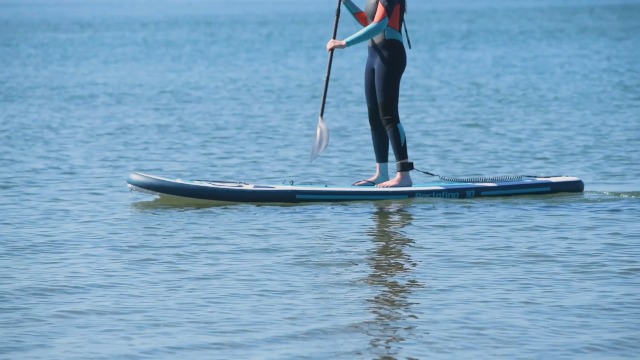
Paddleboarding is a fantastic water sport that offers a unique combination of fun, fitness, and relaxation. When it comes to choosing the perfect paddleboard, one of the most critical decisions you’ll face is whether to go for an inflatable (iSUP) or a solid (rigid) board. Both types have their pros and cons, and the best choice for you will depend on your individual needs and preferences. In this article, we’ll explore the key factors to consider when deciding between inflatable and solid paddleboards, so you can make an informed choice and hit the water with confidence.
Performance and Stability
One of the most important aspects to consider when choosing between inflatable and solid paddleboards is performance. In general, rigid boards tend to offer better performance in terms of speed, manoeuvrability, and stability. This is due to their rigid construction and often more refined shapes, which allow for smoother gliding and better responsiveness.
However, inflatable paddleboards have come a long way in recent years, and many iSUPs now boast performance characteristics that are comparable to their solid counterparts. In particular, high-quality inflatable boards with drop-stitch construction and multiple layers of PVC provide excellent rigidity and stability, making them suitable for a wide range of paddleboarding activities.
Storage and Transport
When it comes to storage and transport, inflatable paddleboards have a clear advantage. iSUPs can be easily deflated and rolled up, making them compact and easy to store or transport in a backpack or car boot. This makes them an ideal choice for those with limited storage space, or who want to take their board on trips and adventures.
In contrast, solid paddleboards require more storage space and can be more challenging to transport. They may require a roof rack or a large vehicle to move them from place to place. If storage and transport are a priority for you, an inflatable paddleboard might be the better option.
Durability and Maintenance
Both inflatable and solid paddleboards have their pros and cons when it comes to durability and maintenance. Rigid boards are generally more durable and less prone to punctures, but they can be susceptible to dings and scratches, which may require repairs. Additionally, solid paddleboards may require more regular maintenance to keep them in top condition, such as waxing and occasional repairs.
Inflatable paddleboards, on the other hand, are more resistant to dings and scratches, as they can flex and bounce back into shape. However, they can be punctured, although high-quality iSUPs are made from tough, durable materials that are designed to withstand rough treatment. It’s essential to choose a reputable brand and high-quality materials to ensure the durability of your inflatable paddleboard.
Cost
Price is another important factor to consider when choosing between inflatable and solid paddleboards. In general, iSUPs tend to be more affordable than rigid boards, making them a popular choice for those on a budget or new to the sport. However, it’s essential to invest in a quality board, as cheaper inflatables may lack durability and performance.
Solid paddleboards can be more expensive, but they often offer better performance and may last longer if cared for properly. It’s essential to weigh up the cost against the benefits and features of each type of board to find the best value for your needs.
The Verdict: Which One Is Right for You?
Ultimately, the choice between inflatable and solid paddleboards comes down to your individual preferences, needs, and circumstances. Consider the following questions to help guide your decision:
-
- What is your primary paddling environment and activity? (Racing, touring, surfing, or recreational paddling)
- How important is performance and stability to you?
- How important is storage and transport convenience?
- What is your budget for a paddleboard?
- How much maintenance are you willing to undertake to keep your board in top condition?
If you prioritise performance and don’t mind a bit of extra maintenance, a solid paddleboard may be the right choice for you. However, if you need a more portable and storage-friendly option, an inflatable paddleboard might be the better fit.
Whichever type of paddleboard you decide to go for, be sure to check out Rock and Mountain’s extensive range of paddleboards to find the perfect board for your needs. And for more insights, tips, and advice on paddleboarding, don’t forget to visit the Rock and Mountain blog to stay up to date on the latest trends and developments in the world of paddleboarding.
In conclusion, there’s no one-size-fits-all answer when it comes to choosing between inflatable and solid paddleboards. By carefully considering your specific needs and priorities, you can make an informed decision and select the perfect board to enhance your paddleboarding experience. Happy paddling!

